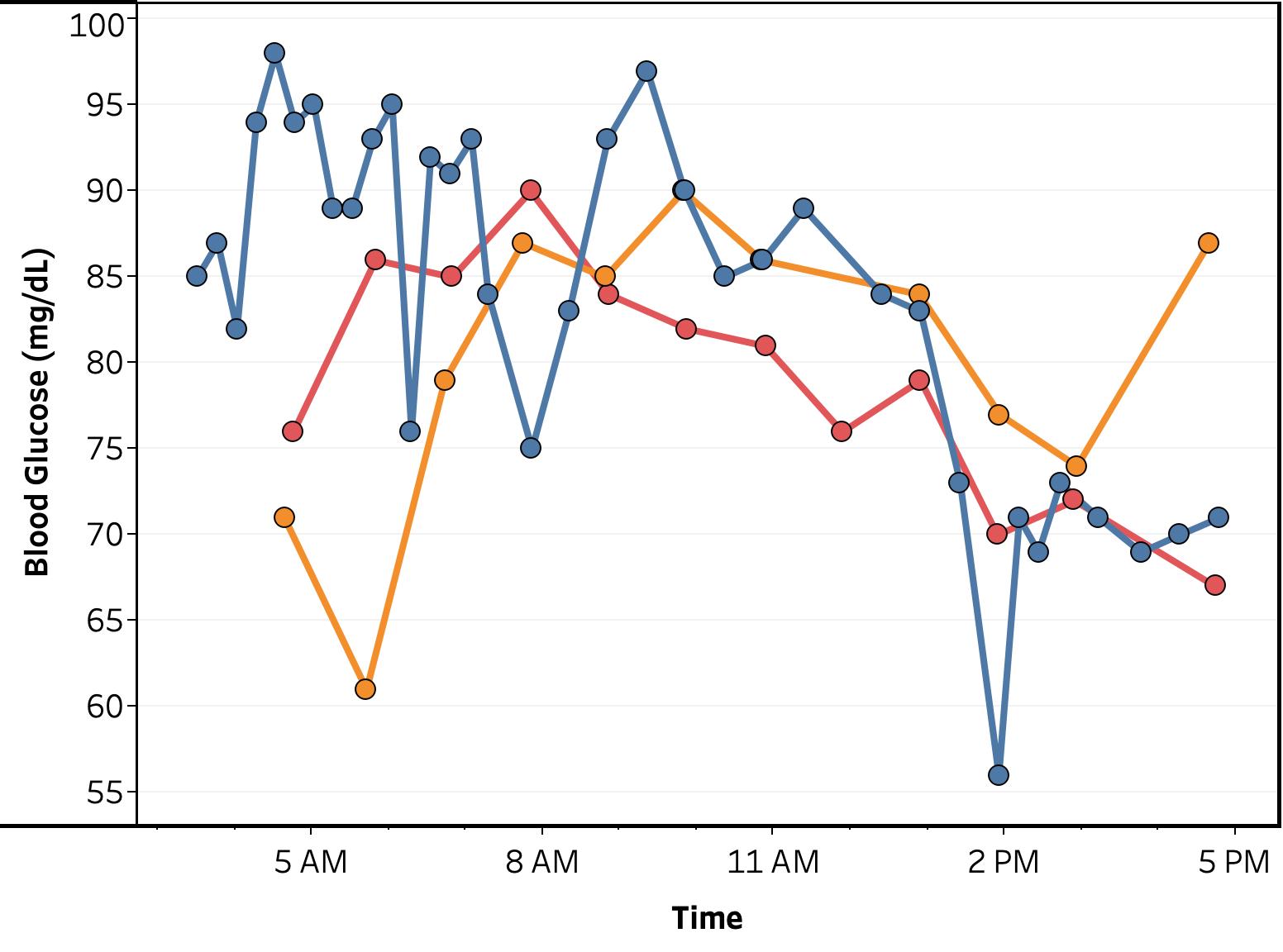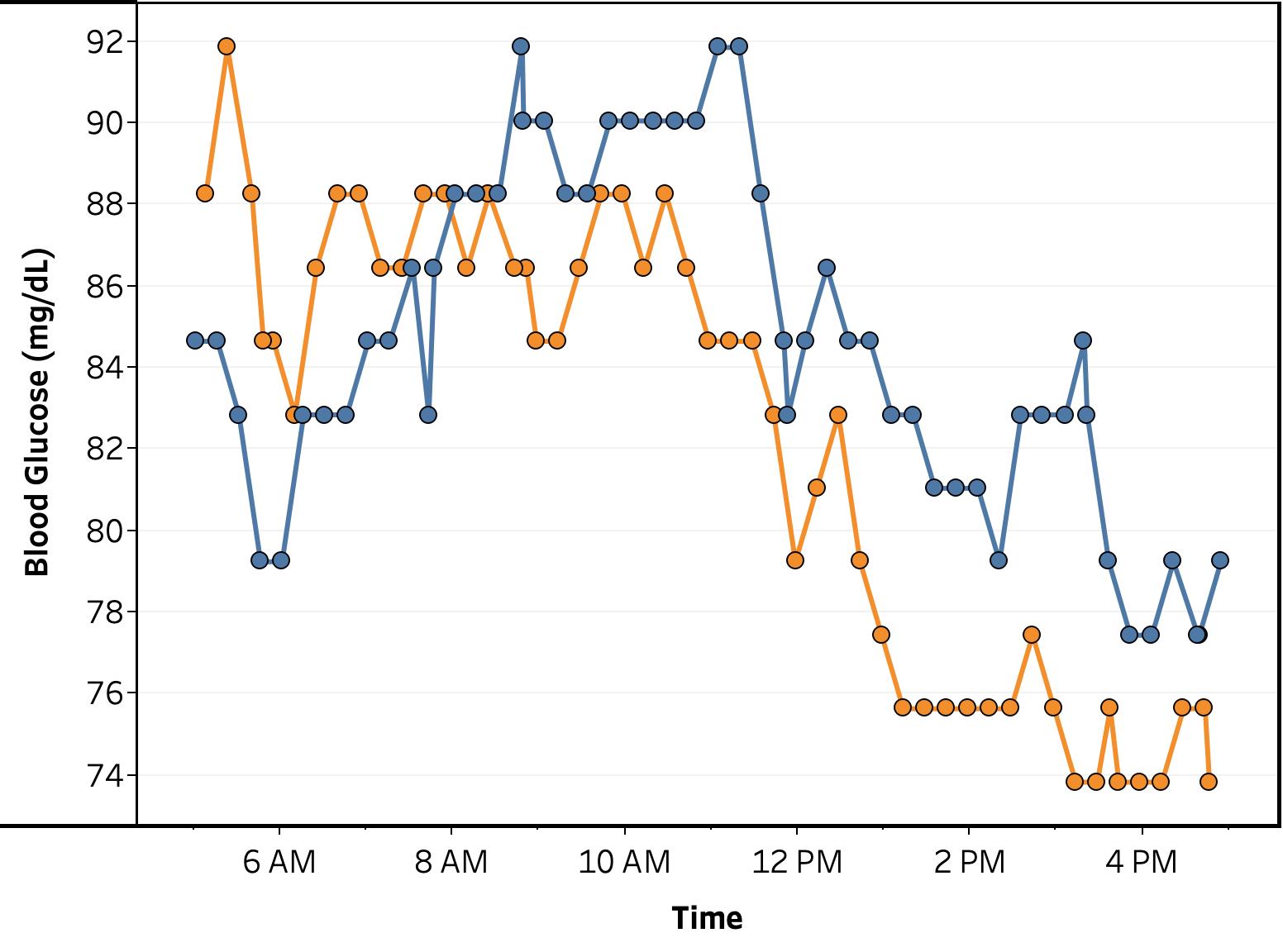Get new posts by email or rss feed
This self-experiment is being done as part of the Keating Memorial Self-Research Project. A couple of other people from the Open Humans community are also running the same experiments. If you’re interested in joining in, let me know in the comments or send me a PM.
I’ve started my experiments measuring the effect of food ingredients on blood sugar. The planned steps are as follows:
- Design experiments and solicit feedback: blog, Reddit, OpenHumans
- Calibrate continuous blood glucose meter: started 2/18, report by 3/9
- Establish fasting baseline & determine time of day for experiments: Complete (this post)
- Food effect measurements
- Dissolved glucose: Started 2/28, report by 3/16
- tbd.
Today I’m going to share the results of the initial measurements to determine what time of day to run the experiments and establish my baseline fasting blood sugar.
Summary
When I skip breakfast and lunch, my blood sugar is sufficiently stable between 12-4p. For all subsequent experiments in this study, I will fast starting 7p the night before and start the measurement at 12p.
Details
Purpose
To identify the best time of day to measure the effect of food ingredients on my blood sugar.
Design/Methods
Procedure. From 7 pm the day before through 4:30p the day of experiment, no food or calorie-containing drinks were consumed and no exercise was performed. Non-calorie-containing drinks were consumed as desired (water, caffeine-free tea, and decaffeinated coffee). BGM measurements were taken approximately every 15 min. on 2/7/20 and every 60 min on 2/24/20 and 2/26/20. CGM measurements were taken on 2/24/20 and 2/26/20.
Measurements. Blood glucose was measured using a FreeStyle Libre flash glucose monitor and a FreeStyle Freedom Lite glucose meter with FreeStyle lancets & test strips. No special precautions were taken to clean the lancing site before measurement. To take a sample, the lancing devices was used to pierce the skin at an ~45 deg. angle from the finger. Blood was then squeezed out by running the thumb and pointer finger of the opposite hand from the first knuckle to the lancing site of the finger. Blood was then wicked into a test strip that had been inserted into the meter and the glucose reading was recorded.
Data Processing & Visualization. Data was visualized using Tableau.
Medication. I took my normal morning and evening medication, but did not dose for meals.
Data
- Full data from FreeStyle Libre
- Combined data from FreeStyle Lite & Libre (only contains Libre data for times matching the Lite measurements)
Results & Discussion


Data from BGM and CGM measurements are shown in Figures 1 and 2, respectively. As expected based on my previous experiments (fasting, non-fasting), I see a blood sugar rise when I wake up due to the dawn phenomenon, which persists until 11a-12p, after which my blood sugar comes down, stabilizing around 2p. This presents a timing challenge for when to measure the effect of foods:
- For the start time, I need to wait for the dawn phenomenon to subside, as it reduces insulin sensitivity
- Slower absorbing foods, like protein and fiber, may impact blood sugar for >>2 h.
- I don’t want to do a full day fast (i.e. skip dinner) for these experiments.
Given these factors, the best time for the experiments seems to be 12p. This introduces the noise of the small BG drop I see between 12-2p, but as long as I study quantities that give 30-40 mg/dL rises as well as the magnitude of BG rise as function of quantity consumed, this should be ok.
Conclusion & Next Experiments
For all subsequent experiments in this study, I will fast starting 7p the night before and start the measurement at 12p.
– QD